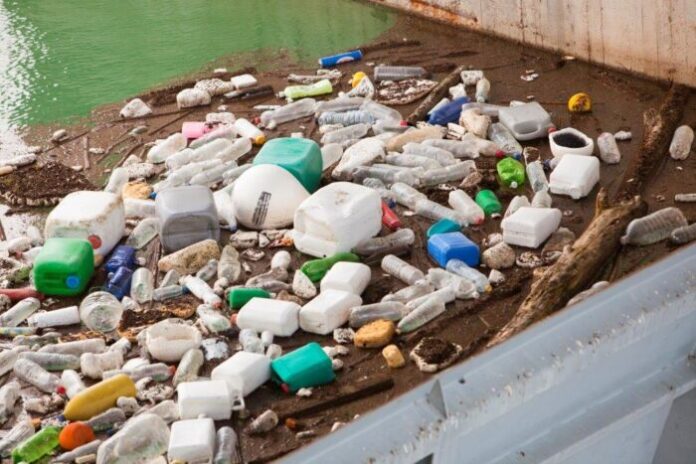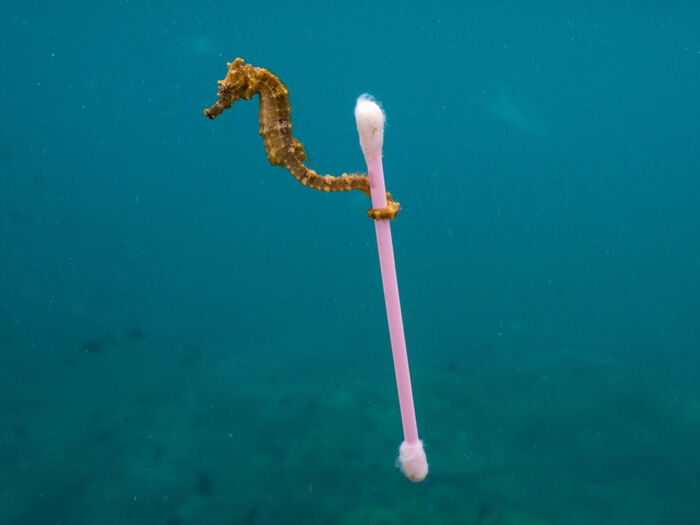
Not only Oceans, where plastic is present in 70% to 90% of waste at sea: the ‘indelible’ signature of this material, which has accompanied us massively since the 1950s, has even been found in rocks as a distinctive stratigraphic element of a geological era which is now called the Anthropocene.
WWF denounces it in the second episode of its report “Plastic-an infinite story”, launched as part of the GenerAzioneMare campaign and which will mark this topic weekly even with cleaning events in the area.
The report highlights a recent study that demonstrates how geological processes have begun to incorporate plastic that ended up at sea into coastal rocks: the presence of plastic is evident in terrestrial deposits, and is becoming so also in marine sedimentary deposits both in deep waters and shallow. The study therefore tells us that plastic has now become a ‘techno-fossil’ and is destined to remain in the geological layers like what we observe today in sediments as a testimony of past ages, from ammonites to mammoth remains.
Atmospheric disturbances manage to transport pollutants produced by man even to places furthest from “civilization”, irreparably contaminating them. “Plastic is raining” is the title of a recent study that leaves no doubt about the huge amount of microplastic present in the atmosphere. The discovery occurred during the analysis of rainwater samples in the Rocky Mountains area while studying possible signs of nitrogen pollution. Plastic microfibres have been identified in over 90% of the rainwater samples. The tracks are also found in the peaks over 3000 meters high.
On the other hand, information from the United States is not isolated. In April 2019, another group of researchers discovered that, in a remote mountain location in the French Pyrenees, huge quantities of tiny plastic particles “rained” from the sky: a daily average of 365 plastic particles on each square meter at 1500 meters of altitude.
It was not possible to trace the exact origin of the fragments, but the analysis of the air currents has shown that some must have traveled suspended from the winds for over 100 km.

A group of German and Swiss scientists found plastic and rubber in the snow that fell on the Strait of Fram, the stretch of Arctic Ocean between the Svalbard islands and Greenland. The presence of microplastics in the snow above the frozen stretches of sea indicates that one of the ways in which microplastics reach the Arctic is by snowing. The concentrations are 10 thousand fragments of plastic per liter including fragments of tires, paint and synthetic fibers. Similar samples had also been taken in the Swiss Alps and in various parts of Germany which showed large quantities of microplastics, greater (up to 154 thousand per liter) in the German samples.
Research published in June 2020 also found microplastics in 90% of surface water and zooplankton samples and in 85% of sediment samples in the Canadian Arctic, from the southern Hudson bay to the tip of the island of Ellesmere. It was not so much the presence of microplastics that alarmed the team of researchers (there are now countless studies that have found microplastics in the Arctic) but the high concentrations, “without any correlation” with the size of the local populations upstream of each site of sampling. This suggests that the source of microplastics is long-distance transport, through atmospheric and ocean currents.
WWF therefore stresses that the dramatic impact of plastic is worse than we imagine: it is therefore not limited to the seas. To combat plastic pollution, WWF is continuing to exert pressure on governments at global level to reach a binding global agreement that indicates certain rules and commitments to prevent the introduction of plastic into the environment. The global petition has already reached over one million and 760 thousand citizens: the next international events, starting from September, will have to resume the actions towards a ‘plasticfree’ system suspended due to the Covid emergency.



































